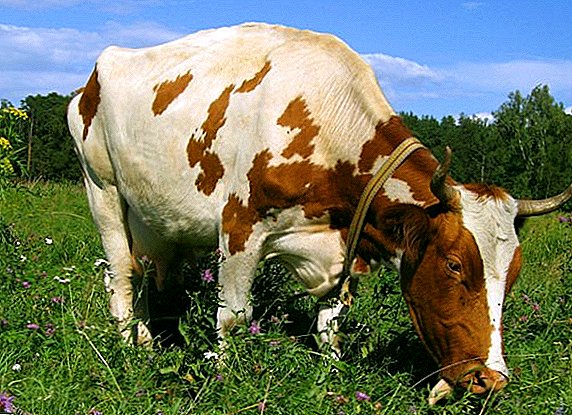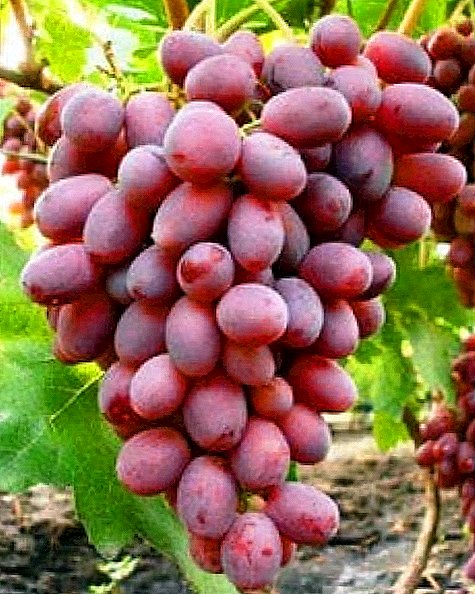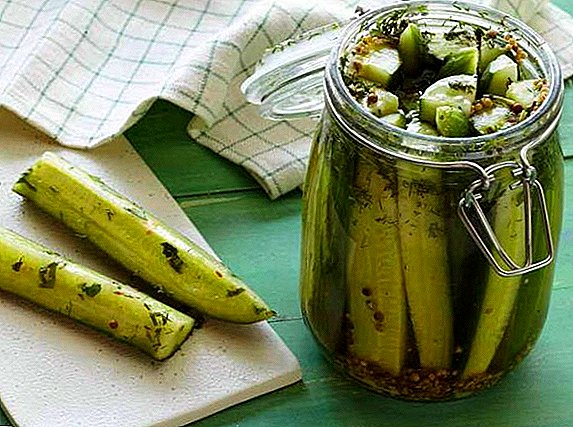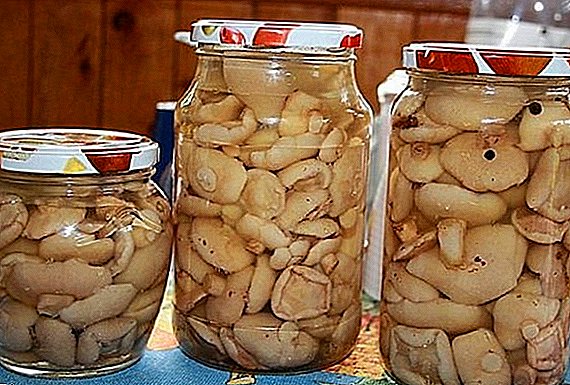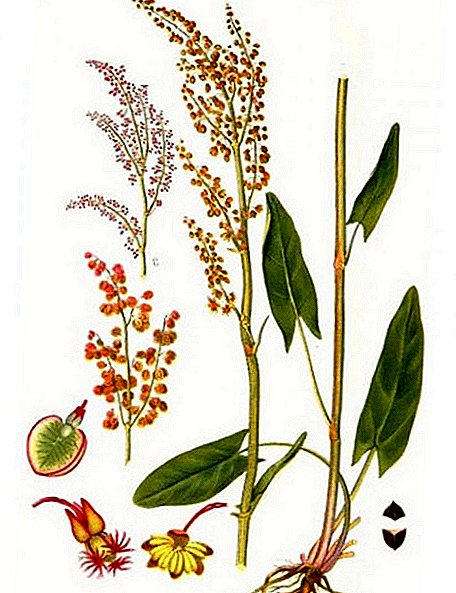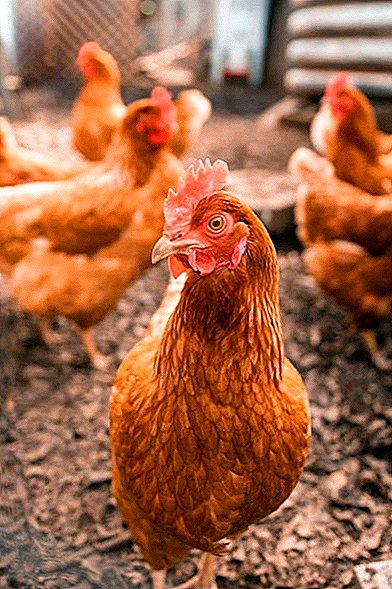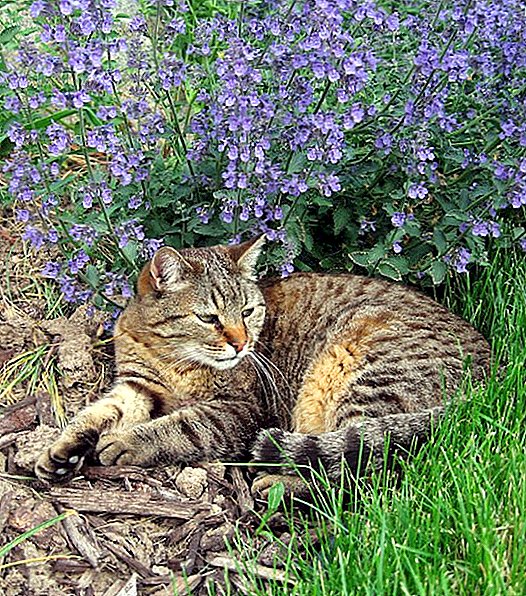 Kotovnik is a spicy aromatic perennial herb from Eurasia. Grass is widespread. Its varieties can be found on the roadsides, wastelands, edges of fields, streams. The plant produces flowers of blue, blue, purple hue. The leaves have a pungent smell, reminiscent of a combination of thyme and oregano. Some varieties of catnip differ in healing properties, and some are pests.
Kotovnik is a spicy aromatic perennial herb from Eurasia. Grass is widespread. Its varieties can be found on the roadsides, wastelands, edges of fields, streams. The plant produces flowers of blue, blue, purple hue. The leaves have a pungent smell, reminiscent of a combination of thyme and oregano. Some varieties of catnip differ in healing properties, and some are pests.
Catnip cat (catnip)
Cat mint has green or gray-green foliage located on straight, branched stems. Light green stems covered with small hairs.  Mint leaves have rough edges, and their front and back surfaces are also covered with fine hairs. In winter, the plant "hibernates," and in early spring fresh stems appear. In ideal conditions, the plant can grow up to 90 cm in height. A feline flower may bloom from late spring to autumn, and in general, the flowering period can last from one to two months.
Mint leaves have rough edges, and their front and back surfaces are also covered with fine hairs. In winter, the plant "hibernates," and in early spring fresh stems appear. In ideal conditions, the plant can grow up to 90 cm in height. A feline flower may bloom from late spring to autumn, and in general, the flowering period can last from one to two months.
Small flowers are born in densely overflowed whorls on the spike-like terminal brushes.
Two-lipped flowers of white color with pale purple or pink spots on the lower lip, are typical of the mint family. The small upper lip has two lobes, while the lower one includes three: with a larger middle lobe and a frill.  Bees of all kinds, as well as flies and many different types of butterflies, visit flowers with nectar. Pruning after the initial flowering contributes to the re-flowering of the cat's catnip.
Bees of all kinds, as well as flies and many different types of butterflies, visit flowers with nectar. Pruning after the initial flowering contributes to the re-flowering of the cat's catnip.
Did you know? Catnip gets its name due to the intoxicating effect produced on domestic cats. Aromatic oil (nepetalacton) contained in the leaves of catnip (in the sebaceous glands on the underside of the leaves and on the stems), strongly attract the cat. Large cats like lions, tigers, leopards, lynx and jaguars are also sensitive to nepetalactone. 10-30% of cats do not respond to catnip, regardless of age.Cat mint not particularly known for its decorative qualities, so it is grown exclusively for attracting butterflies. In addition, the plant has many advantages for humans, providing a beneficial effect on his body.
Once the grass was widely used for medicinal purposesHowever, today this method of application is not very common.
Scientists have also proven that the active ingredient in mint leaves is an excellent deterrent to mosquitoes, although it is ineffective when applied to the skin.  The foliage can be used in fresh or dried form for brewing herbal tea or used as a culinary herb.
The foliage can be used in fresh or dried form for brewing herbal tea or used as a culinary herb.
Cat's catnip extremely easy to grow. Mint blooms profusely in full sun and in well-drained soil, but able to survive in partial shade and on poor soils.
The level of soil moisture and fertility greatly affect the size of the plant. Grass is easily propagated by seed or by dividing the bushes. The best time to harvest - The end of the summerwhen the plant is in full bloom.
Meet also other perennials that will decorate your garden: kupena, hazel grouse, vatochnik, bathing vessel, rogers, rudbeckia, aconite, gypsophila, stockrose.Carved stalkand (or whole plants cut off at the base) can be hung to dry in a dark, warm and well ventilated place. Dried leaves are often used to make herbal tea.
Store dried mint in tightly closed containers. Dried leaves retain their flavor. However, during long-term storage, the attractiveness for cats decreases as the essential oils evaporate from them.  Should be consideredthat the plant can be damaged by domestic cats, which will find its storage place. Therefore, some gardeners propose to cover the mint with a decorative cage, others recommend growing the plant in a hanging basket.
Should be consideredthat the plant can be damaged by domestic cats, which will find its storage place. Therefore, some gardeners propose to cover the mint with a decorative cage, others recommend growing the plant in a hanging basket.
Kotovnik Mussini
Kotovnik Mussini - a perennial plant, common on the dry rocky slopes of the Caucasus. Maximum bush height - 40 cm. Leaves - thin, wrinkled, green or grayish-green shade.
Purple flowers are collected in one-sided brush. The grass contains 0.2-0.5% of essential oil, in the leaves - 0.25%. The oil has a sharp mint-camphor smell.  Propagated its seeds, the germination of which takes from 18 to 30 days. Planted plant in late summer. The blooming period of the blue catnip is stretched enough (from March to September).
Propagated its seeds, the germination of which takes from 18 to 30 days. Planted plant in late summer. The blooming period of the blue catnip is stretched enough (from March to September).
Grass does not require special care., it is enough to apply a little standard fertilizer to the soil and water it from time to time. Pruning flowering stems is recommended in sunny weather, at the end of the flowering season.
Cut stalks and leaves are laid out to be dried with a thin layer in special dryers or under a canopy. Dried herbs are stored in paper bags in a dry ventilated place.
Apply dried catnip Mussini as a spice for salting fish. In addition, dried herbs are used as a seasoning for various dishes.
Large-flowered cattle (Siberian)
Large-flowered cattle - perennial medicinal plant. The height of the grass can reach 50 cm. The bracts have a blue-purple hue.
The leaves are rather thin. The corolla is fluffy and colored a violet-blue color. The length of the corolla is about 17 mm. Grass blooms in the second half of June, and fruit ripening begins in the first half of July.  The plant grows on forest edges, meadows and grassy slopes. Under natural conditions, this catnip is found in Ukraine (Zaporozhye Region, Crimea), in the Baltic States, in the Caucasus, as well as in the European part of the Russian Federation and in Siberia. This variety of catnip is also often called Siberian.
The plant grows on forest edges, meadows and grassy slopes. Under natural conditions, this catnip is found in Ukraine (Zaporozhye Region, Crimea), in the Baltic States, in the Caucasus, as well as in the European part of the Russian Federation and in Siberia. This variety of catnip is also often called Siberian.
Flowers, stems and leaves of grass are endowed with many healing properties, which is explained by the presence of essential oil and iridoids in its composition.
Infusion prepared on the basis of large-flowered catnip, it is recommended to drink as an anti-inflammatory and tonic.
Multi-thread cattle
Multi-thread cattle - grass-covered perennial plant. It occurs on steep slopes and open meadows. Geographical area: Mongolia and most of the regions of the Russian Federation.
Stems of grass are simple or little branched. Plant height reaches 50 cm. The leaves are located on short petioles, divided into 3 or 5 parts. Spike-shaped inflorescences.  The leaves in the zone of inflorescence are oval, pointed, woolly, bluish above.
The leaves in the zone of inflorescence are oval, pointed, woolly, bluish above.
Cups have bulging hairs and sedentary amber glands. The corollas are twice as long as the calyx, painted in a blue-purple tone.
Kozovnik Yezk
Yezk catnip is an aromatic perennial, reaching a height of 100 cm. Stems are thick and straight. The leaves are located on the petioles up to 2 cm long. Flowers of the Izek catnip are located in false whorls, at the very top of the shoot.
Umbrella axis - thick-haired. The length of the flowers - up to 30-35 mm. Bracts narrow-lanceolate-linear, with long pubescent hairs.
Calyx - tubular, bent, with long soft teeth, has a bluish tint. The corolla is double-lipped, with a thin violet-blue tube.  The corolla is thick-haired outside. Fruits are smooth, obovate, pubescent at the top, about 3 mm long. It blooms in late summer (in August), and bears fruit in September.
The corolla is thick-haired outside. Fruits are smooth, obovate, pubescent at the top, about 3 mm long. It blooms in late summer (in August), and bears fruit in September.
Important! Yezk catnip belongs to the endangered species. The plant is on the verge of extinction. Today, the main habitat of this variety is the north of Japan.
Kotovnik Fassena
Kotovnik Fassena - low ground cover perennial. From other varieties of catnip, this plant is distinguished by narrower leaves. Brush inflorescences - blue or pink. Attractive foliage has a grayish-green tint.
Plant very unpretentious, demonstrates early, abundant and long flowering (throughout the summer season). Kotovnik undemanding to the composition of the soil.  And thanks to its drought tolerance, he feels great in sunny places. However, the plant can successfully flourish in light penumbra.
And thanks to its drought tolerance, he feels great in sunny places. However, the plant can successfully flourish in light penumbra.
Kotovnik Fassena reaches 40-50 cm tall and all the plants are quite fragrant. This variety is ideal for decorating borders, flowerbeds, rockeries.
Since it is saturated with aromatic essential oils, its flowers and leaves attract healthy insects to the garden.  It is also recommended for growing in pots and other containers and is suitable for landscaping roofs.
It is also recommended for growing in pots and other containers and is suitable for landscaping roofs.
The plant looks great in combination with yarrow, salvia, lavender, sage, geranium.
Ancestral cattle
Ancestral cattle - undersized groundcover. The height of the perennial - only 25-30 cm. The leaves are pale green. The flowers have a blue tint and are collected in inflorescences.  It blooms very abundant and long (from June to October). In addition, pruning faded parts of the bush enhances further flowering. Perennial seed well propagated. Grass pretty unpretentious, drought-resistant and frost-resistant.
It blooms very abundant and long (from June to October). In addition, pruning faded parts of the bush enhances further flowering. Perennial seed well propagated. Grass pretty unpretentious, drought-resistant and frost-resistant.
Shrubs prefer sunny places and well drained sandy soils. But do not forget to cut the bushes after the flowering period.
A week after pruning, you will again see abundant blooms. This herb is not sick and is very attractive for butterflies.
Did you know? Gingerbread catnip is often called the "blue carpet". This is really a very attractive ground cover plant. Such a catnip decorates a garden with a thick blue carpet and charming grayish-green foliage. Decorative properties are not lost even after the end of the flowering period.
Kokand cattle
Kokand catnip - a variety that grows in high-mountain meadows at an altitude of 4000 m. The plant can be found in Central Asia and in China. Stems - numerous, straight, strongly branched, 10-40 cm tall. Together with the leaves they are covered with hairs.
Flowers - lilac-purple. Leaves - ovate, with jagged edges, painted in light green tones. The plant blooms in late summer (July-August), and bears fruit in August. The plant has a sharp mint flavor.  He needs semi-shaded location humus-rich land. The seeds are planted in spring, and the first shoots appear at a temperature of + 18 ... +20 ° C. The plant is also propagated by dividing the bush and cuttings. Breeding is carried out at the beginning or at the end of spring.
He needs semi-shaded location humus-rich land. The seeds are planted in spring, and the first shoots appear at a temperature of + 18 ... +20 ° C. The plant is also propagated by dividing the bush and cuttings. Breeding is carried out at the beginning or at the end of spring.
Half-eared cattle
Semi-Fold Catnip It is a large plant with blue or purple flowers. The habitat of the plant is rather narrow: Japan (Honshu, Shikoku) and the Russian Federation (Kuriles-Kunashir). Occurs on dry mixed grass slopes of the mountains.
The height of the bushes is 30-40 cm. The flowers are blue-blue and the leaves are gray-green. Large flowers are collected in inflorescences (false whorls). The length of the umbrella is 10 cm. In each inflorescence there are 50-60 flowers.  The grass has a pleasant smell, reminiscent of the smell of lemon mint - lemon balm. Bloom period: June-August (blooms in July, and the fruits ripen in September). It is unpretentious in cultivation, suitable for planting in open areas.
The grass has a pleasant smell, reminiscent of the smell of lemon mint - lemon balm. Bloom period: June-August (blooms in July, and the fruits ripen in September). It is unpretentious in cultivation, suitable for planting in open areas.
Important! ANDIt is necessary to use the catnip for medicinal purposes with caution, only for its intended purpose and under medical supervision. The properties and characteristics of this herbaceous plant are given only for informational purposes and are not a guide to action.Kotovnik, as we have already seen from the description, not only drives our beloved cats crazy, but also has many useful qualities.
By planting this plant in your garden, you will never talk about it. you will not regret: it blooms profusely and grows rapidly. Catnip bushes are able to decorate any garden or sunny garden.
Many people confuse this plant with melissa. How to distinguish them, you will see in this video.


